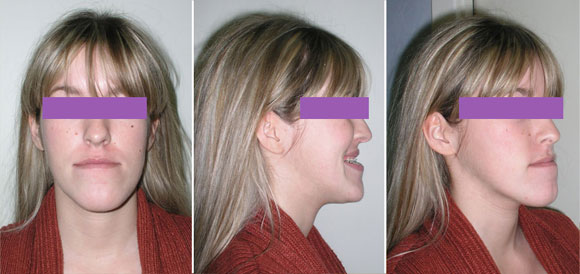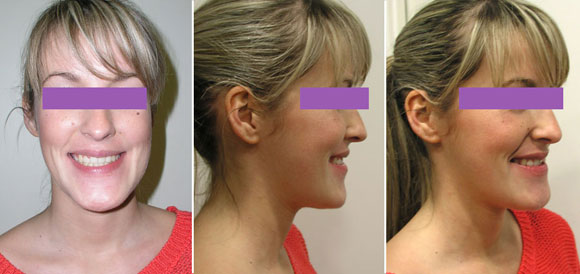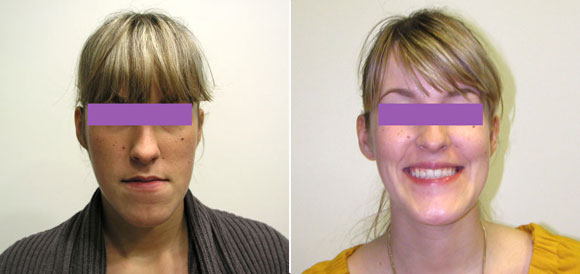
Orthodontics
Orthodontics is a specialized branch of dental medicine that deals with the growth, development and maintenance of the dentofacial complex, from birth to adulthood. Includes diagnosis, prevention and treatment of all forms of malocclusion of the teeth, which is a disorder in the patient’s bite.
Straight teeth and a proper bite are not important only for aesthetics but also to even the pressure on all teeth, facilitate oral hygiene, prevent tooth decay, tooth loss and illness of the teeth and gums.
The first orthodontic control
A child should have the first orthodontic control around 7 years of age.
A control at an even earlier age is recommended in the following situations:
- Reverse overlap of one or more baby or permanent teeth
- After the third year of life in case of disorders in the pronunciation of some sounds (for eg. letter S)
- Significant space between the two front teeth
- Difficult emergence of the front permanent teeth
- Trauma of teeth and jaws
Orthodontic treatment
Orthodontic treatment is used to correct the positions of teeth and adjust the bite.
The treatment may begin at an earlier age and is called early or interceptive orthodontic treatment, and is used to correct some typical situations, or prevent the onset of certain orthodontic anomalies.
During child’s growth and development the therapy can begin with removable braces and/or fixed braces. There is also the possibility of using external devices (Delaire mask, Headgear).
The beginning of orthodontic treatment is very different in children and adolescents. It depends on the age of emergence of permanent teeth, growth and development, and type of orthodontic anomaly. Thorough diagnosis will determine the type of anomaly and the best time to start treatment.
Although therapeutic possibilities are greater in children between the age of 6 and 14, than in patients who have finished growth, generally there is no age limit for orthodontic treatment. Lately orthodontics in adults is much more frequent because of great ability of correction with the modern devices. Orthodontic treatment lasts on average two years and is usually painless, sometimes only the first days may cause slight discomfort before the patient gets accustomed to the braces.
In addition to correcting the bite and achieving an esthetic smile, fixed devices can also be used to:
- close the empty space in case of tooth loss
- straighten the teeth for implant insertion and prosthetic replacements
- pull out the residual teeth from the bone
- better align teeth degraded by periodontitis
- prepare for maxillofacial surgery of the jaw and chin
Lingual (inner) orthodontic braces
In addition to external aesthetic braces, the object of desire of many patients is a completely invisible, internal device. These braces are attached to the inner surface of teeth and connected with arch wire. Patients accustom well to lingual braces. However, to avoid the installation of additional supporting elements, such as micro-implants, in some cases, the correction is still a lot easier with external devices.
Orthognathic Surgery




In some cases when satisfying facial harmony and occlusion cannot be obtained only with standard orthodontic treatment, it is necessary to perform a surgical procedure to correct the size and shape of the bones. The most common interventions are done on the upper and/or lower jaw and/or chin.
Jaw deformations of this type are called skeletal anomalies and there are various causes for their occurrence. They are usually hereditary, but may also be the result of certain external factors such as trauma (accidents, blows, etc.), certain harmful habits (mouth breathing, tongue thrusting during swallowing, etc.), uncoordinated sequence of exchange of baby and permanent teeth, and others.
Nice results can be achieved in case of oversized or too short lower jaw, in case of overly retracted upper jaw, in case of overly accentuated or poorly accentuated chin.
These situations reflect directly on the occlusion that can be reversed, or the upper jaw is too highlighted with very visible gums, or the occlusion is open and patient has difficulty to keep the mouth shut.
The protocol:
- Fixed braces are placed on both jaws to correct the teeth in relation to bone
- With the braces the patient goes to surgery
- After the procedure, the braces are used for fine alignment of the teeth
- The braces are removed and the patient starts wearing a retention device to preserve the results
Retention
The period after active orthodontic treatment is extremely important, and many patients do not take it seriously. In fact, a minimum of one year is needed to consolidate the teeth and occlusion in the new position. Also, regular checks are necessary and very important.
There are various types of retainers: the transparent splint (Essix retainer), the type with wire elements (Wraparound retainer, etc.) and fixed wire type that are applied to the inner surfaces of the front teeth. The time of use is unlimited, especially if the patient keeps the harmful habits of pushing the tongue when swallowing, breathing through the mouth, etc.
FAQ:
Arrange an appointment
The experienced team of Dental Polyclinic Mady Maričić is able to solve all orthodontic problems and give you an even and beautiful smile.
What our patients say about us:

Name:
Enver Tursunović
Year of birth:
1965.
Residence:
Rijeka
Reason for visit:
Treatment of the tooth
What is your opinion of the quality of services/therapy in Dental polyclinic Mady Maricic:
The best opinion and high quality services.
Describe the Polyclinic's staff relation towards you as a patient:
Kind, correct, they explain every problem and what should be done, they do whatever needs to be done and in less time.

Name:
Martino Džido
Year of birth:
1996.
Residence:
Rijeka
Reason for visit:
Caries
What is your opinion of the quality of services/therapy in Dental polyclinic Mady Maricic:
First class.
Describe the Polyclinic's staff relation towards you as a patient:
They are legendary.

Name:
Sara Frank
Year of birth:
1996.
Residence:
Rijeka
Reason for visit:
Orthodontic braces
What is your opinion of the quality of services/therapy in Dental polyclinic Mady Maricic:
The service is great, the doctor is very cheerful, she's always smiling and communicative.
Describe the Polyclinic's staff relation towards you as a patient:
I could not ask for a better relationship and better staff.

Name:
Vedrana Dolušić
Year of birth:
1991.
Residence:
Rijeka
Reason for visit:
Orthodontic braces
What is your opinion of the quality of services/therapy in Dental polyclinic Mady Maricic:
Everything was great and quickly done. The service is excellent. Payment in installments is great considering the situation in the country (unemployment, etc.).
Describe the Polyclinic's staff relation towards you as a patient:
Everything was excellent, the staff always meets the patient's every need.

Name:
Diana Blašković
Year of birth:
1979.
Residence:
Roč
Reason for visit:
Orthodontic braces
What is your opinion of the quality of services/therapy in Dental polyclinic Mady Maricic:
Professionalism; satisfaction with the result; satisfaction with post-service
Describe the Polyclinic's staff relation towards you as a patient:
Professionalism; kindness; intimacy; relaxation

Name:
Anna Kuzma Matić
Year of birth:
1983.
Residence:
Pazin
Reason for visit:
Malocclusion
What is your opinion of the quality of services/therapy in Dental polyclinic Mady Maricic:
High quality service and the staff is always very kind. The treatment is on a high level.
Describe the Polyclinic's staff relation towards you as a patient:
The employees are always friendly and approachable, willing to meet your needs about the appointments. I always leave smiling!

Name:
Matea Bogović
Year of birth:
1990.
Residence:
Malinska
Reason for visit:
Orthodontic braces
What is your opinion of the quality of services/therapy in Dental polyclinic Mady Maricic:
Everything is great, high five.
Describe the Polyclinic's staff relation towards you as a patient:
Everyone is very friendly, nice and professional.





